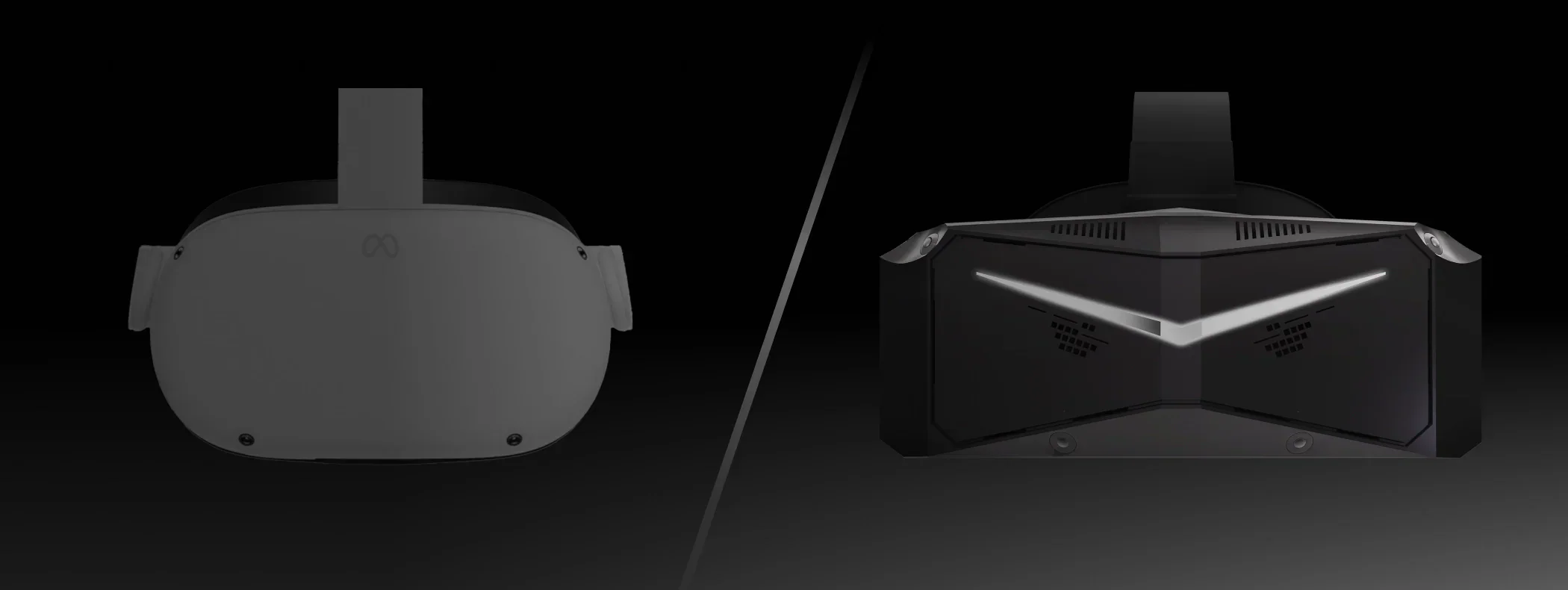Since its release in 2020, Meta Quest 2 has opened the doors of VR to millions of users worldwide. With accessible pricing and easy standalone use, it was one of the most popular headsets of its time.
But as VR technology evolves rapidly, the hardware demands of modern PCVR titles have far outpaced what Quest 2 was built to handle.
If you’re a Quest 2 owner interested in PCVR — or already frustrated by resolution limits, latency, and compressed visuals — here’s what you’ll instantly experience when upgrading to the Pimax Crystal Light.
Dramatically Sharper Visuals, Next-Gen Clarity
The most immediate difference you’ll notice is image sharpness.
Pimax Crystal Light features 2880×2880 resolution per eye, delivering over 2.2× the clarity of Quest 2. The upgrade is instantly visible:
-
Fine textures, distant objects, and environment details become crystal clear
-
UI elements, menus, gauges, and cockpit panels are razor-sharp and effortlessly readable
-
No more squinting at blurry distant terrain or smeared textures — everything is vivid, detailed, and immersive
It’s not a small step — it’s a generational leap you’ll feel the moment you put it on.
Deep, Pure Blacks and Superior Contrast
Quest 2’s LCD panels often struggle with dark scenes, producing a noticeable gray haze that dulls the atmosphere. In contrast, Pimax Crystal Light’s high-resolution QLED displays deliver enhanced color vibrancy and noticeably deeper blacks compared to conventional LCD headsets.
While not fully on par with QLED technology, these panels significantly improve contrast performance, allowing starlit skies, shadowed interiors, and dimly lit environments to appear clearer, richer, and more atmospheric. The result is a more cinematic and immersive experience, particularly in games where mood and lighting play a crucial role.
True Native PCVR — Visual Lossless compression
Unlike Quest 2, which relies on Oculus Link or Air Link to stream PCVR games through USB or Wi-Fi — introducing heavy compression, encoding/decoding, and additional latency — Pimax Crystal Light connects via native DisplayPort.
What does this mean to you?
-
Direct, near-lossless signal from your GPU to headset display
-
No encoding/decoding chain in the data path
-
Ultra-low latency with stable, native frame delivery
-
Clean, precise visuals — every pixel rendered by your GPU arrives with full integrity
For serious PCVR players, this is the uncompromised standard for visual clarity, stability, and response time.
Seamless, Plug-and-Play PCVR Compatibility
Pimax Crystal Light offers effortless, reliable compatibility with SteamVR and virtually all major PCVR titles — from simulators and racing games to shooters and expansive open-world experiences.
Unlike headsets that require middleware, frequent Air Link updates, or complex setup procedures, Crystal Light keeps things refreshingly simple. Just connect the DisplayPort cable, power on the headset, and launch your game. No driver conflicts, no patch juggling, and no workaround tricks — it just works, every time you play.
Unleash the Full Power of Your High-End GPU
If you’ve invested in an RTX 4080, 4090, or 5090-class GPU, you deserve a headset that can fully utilize its horsepower. Quest 2’s compressed streaming over USB/Wi-Fi bottlenecks your GPU performance, capping image quality and limiting frame rates — no matter how powerful your PC.
-
Delivers true native 4K@120Hz per eye output, visual lossless compression.
-
Supports high-res textures, dynamic lighting, and HDR effects at full fidelity
-
No compromises, no visual downgrades — your GPU’s capabilities finally unleashed
Who Should Upgrade from Quest 2 to Crystal Light?
-
Sim pilots seeking cockpit readability and a wide FOV
-
Racing gamers need sharp detail at speed
-
VR shooter fans are demanding instant response and clarity
-
Visual purists chasing flawless blacks, HDR, and true-to-source image quality
Quest 2 was the perfect VR starter headset for its time. But in 2025, with new ultra-high-res, high refresh, HDR-rich VR games and PC hardware, it’s no longer enough to keep up.
Pimax Crystal Light delivers a generation-defining leap in clarity, color depth, latency-free native rendering, and plug-and-play PCVR compatibility, making it the clear choice for serious PCVR players.
Exclusive Discount: Use the code CL2025 at checkout to enjoy special savings!











